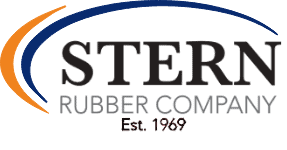Our customer base here at Stern is very broad, and ranges from tiny hearing aid pieces to massive gate valves. Our team is able to produce custom rubber parts for almost anything. One of our customers has sent our product flying high over wildfires, and that is Minnesota based Wipaire.
In the late 1940’s, World War 2 veteran and aircraft mechanic, Ben Wiplinger, began converting surplus military aircraft into corporate planes at the South St. Paul, Minnesota Airport. As the 40’s came to an end, Ben had begun operating Wiplinger Aircraft Service, which offered fuel service, aircraft maintenance, restoration and sales, as well as upholstery. As the decade soon changed, so did Ben’s focus. In 1951, he purchased his first seaplane and began flying north on fishing trips, while continuously growing his passion for seaplane flying. His passion led him to tinkering with the floats he had on his planes, and even developed an improved hydraulic system for the Edo floats on his craft. By the end of the 1950’s, Ben had sold his FBO business and began focusing on sea planes.
In 1960, Ben created Wipline Inc., and got to work on developing his first set of floats. With help from a Cessna 185 to test the floats on, Ben worked 3 long years to develop a better float. With help from the 3M corporation, Ben was able to use a custom metal bonding technique, that allowed the use of few rivets, and led to a lighter, smoother float. This initial idea then led to Ben creating the first flat top float, which allowed for easier access in and out of one’s aircraft. With his first set of floats being sold in 1962 to Ontario Central Airlines, another company named Cessna soon added Wipline floats to their 185 and 206 model aircraft. Within 10 years, while operating out of Fleming Field, Wipline produced 30 sets of floats.
In 1970, Ben’s son, Bob, began working at Wipline Inc., and in 1971 the company moved to a new 160 acre facility along the Mississippi River, establishing a seaplane base. By 1974, Bob began to come up with some new ideas of his own, and in 1974 founded Wipaire Inc., which performed maintenance as a certified Cessna service center at Fleming Field. As the 70’s came to a close, Bob purchased Wipline Inc. from his father and combined both companies under the Wipaire name.
The 1980’s brought a great amount of growth for Wipaire. The company introduced the Wipline 6000 float for the de Havilland Beaver in 1982, and had the opportunity to develop more than 10 modifications for the craft. The 80’s also led to the development of Wipline’s most popular float, the 8000 floats, that were installed on the Cessna Caravan aircraft, until being replaced by the 8750 in 2012. By the end of the 1980’s, Wipaire had grown to 35 employees, and had sold 700 sets of floats, while also adding a refinishing department and an avionics department.
The 90’s brought continued success for Wipaire, as they continued their work with Cessna and Beaver, and also led to the development of Wipaire’s smallest float family. Although the 90’s were strong for Wipaire, the turn of the century led to one of Wipaire’s most impressive creations. In 2003, the company introduced the Fire Boss float, which is designed to be used as an initial response air tanker for fighting forest fires from the air. This float, that is capable of being filled through a skilled touch and go type maneuver, is used by firefighters around the globe, and utilizes all of Wipaire’s float technology, with the added ability to gather water for fighting fires.
Today, Wipaire has two locations. The main location is still at Fleming Field in St. Paul, and the other is a service center outlet in Leesburg, Florida, that allows customers in the southeastern United States and the Caribbean to receive float maintenance and other necessary repairs to their seaplanes. After over 55 years, Wipline is still the industry’s leader in float plane floats, from their work with Cessna to the Fire Boss craft, their design, quality and overall product is second to none, and those of us here at Stern, are happy to have them as a customer.
